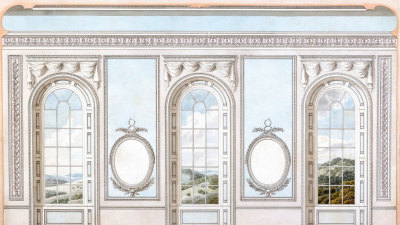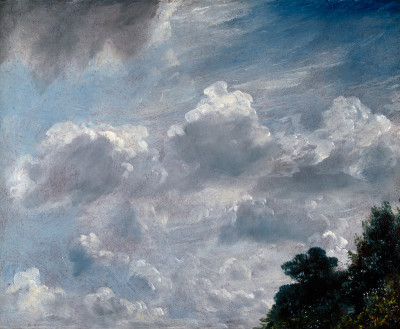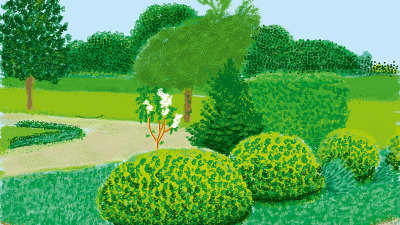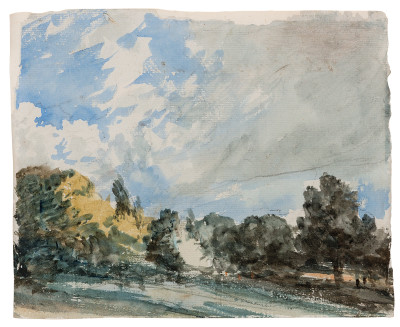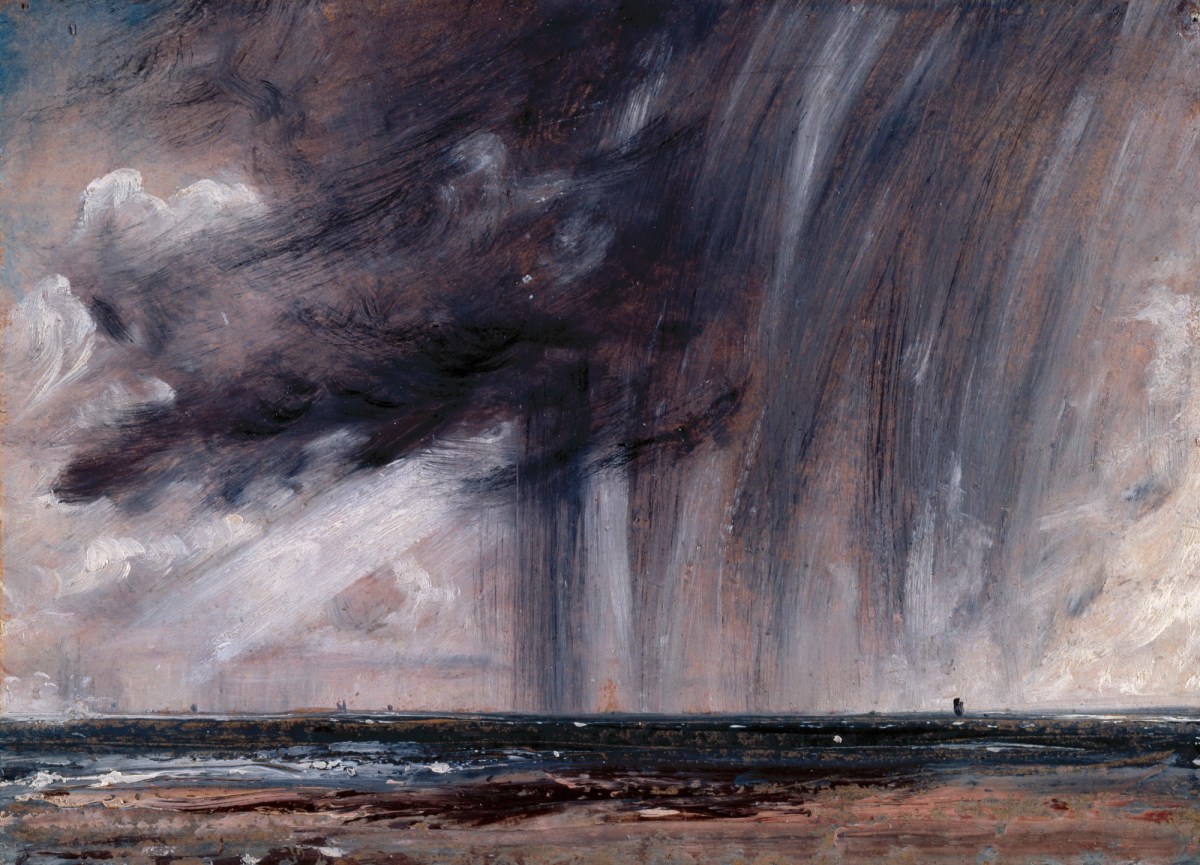
John Constable RA, Rainstorm over the Sea, ca. 1824-1828.
Oil on paper laid on canvas. 235 mm x 326 mm. © Photo: Royal Academy of Arts, London. Photographer: John Hammond.
This image is not available to download. To licence this image for commercial purposes, contact our Picture Library at picturelibrary@royalacademy.org.uk
Rainstorm over the Sea, ca. 1824-1828
John Constable RA (1776 - 1837)
RA Collection: Art
This is one of the most dramatic studies of sea and sky that Constable sketched at Brighton. The thunderous black clouds and torrential downpour have been painted rapidly to capture the fleeting nature of the scene.
Constable's atmospheric sketch of a rainstorm over Brighton beach was painted between 1824 and 1828 while the artist's wife and family were living on the Sussex coast. In many of his Brighton sketches Constable included figures and boats as points of reference but here he has almost completely dispensed with human interest to capture the powerful but fleeting image of a storm with a shaft of sunlight suddenly breaking through the glowering black clouds.
The sky has been created with a series of hasty sweeps of the brush. The surface of the sea has been given emphasis by a number of horizontal incisions perhaps with the end of the brush. This sketch is unusual in that Constable looks so directly out to sea here.
The artist's fascination with skies led him to make numerous similar studies directly from nature, often showing the same location transformed by different light and weather conditions. In Brighton he practised making rapid sketches of the sea and sky while sitting on the beach with a paint box balanced on his knees, a sheet of paper pinned to the lid. Major works, like A Boat Passing a Lock (1826), demonstrate how much this practice honed Constable's skill in depicting transitory effects.
In English Landscape mezzotints, Constable writes that he thought that Brighton was ‘perhaps no spot in Europe where so many circumstances conducive to health and enjoyment are to be found combined.’ (Beckett, Discourses, p. 20).
The poor health of Constable's wife was the reason that the family moved down to Brighton in spring 1824. Maria returned there 1825-26 and again in 1828 and Constable visited as much as possible. This sketch has therefore commonly been assigned to one of Constable's visits to Brighton between 1824 and 1828.
Brighton was preferred residence of King George IV. Constable wrote to John Fisher in 1824 complaining that ‘Brighton is the receptacle of the fashion and offscouring of London. The magnificence of the sea, and its (to use your own beautiful expression) everlasting voice is drowned in the din & lost in the tumult of stage coaches – gigs – ‘flys’ etc – and the beach is only piccadilly …. By the sea-side … in short there is nothing here for the painter but the breakers - & the sky – which have been lovely indeed and always [various].’ (Beckett, VI, p.171).
Constable drew many oil sketches looking from the beach towards the elegant Chain Pier and looking west towards Worthing. Sent some of these sketches to Fisher early 1825 and he explained that ‘they were done in the lid of my box on my knees as usual’ (Beckett, IV, p.189)
Fisher wrote to Constable about the sketches he made in Brighton, comparing them to the writing of William Paley in his Sermons, and suggested they were ‘full of vigour, and nature, fresh, original, warm from the observation of nature’ (Beckett, Discourses, p.196; quoted in Gray, 2006, p.218).
Further Reading
Graham Reynolds, The Later Paintings and Drawings of John Constable, 1984, Text Vol. p. 147, no. 24.67; Plates Vol. pl. 539
Anne Gray and John Gage, Constable: Impressions of Land, Sea and Sky, exh. cat., National Gallery of Australia, 2006, p.218
R.B. Beckett, ed., John Constable's Correspondence IV, Patrons, Dealers and Fellow Artists Vol IV, Ipswich, Suffolk, 1966
R.B. Beckett, ed., John Constable's Discourses, Ipswich, Suffolk, 1970
R.B. Beckett, ed., John Constable's Correspondence VI, The Fishers Vol VI, Ipswich, Suffolk, 1968
Object details
235 mm x 326 mm
Associated works of art
1 results
Start exploring the RA Collection
- Explore art works, paint-smeared palettes, scribbled letters and more...
- Artists and architects have run the RA for 250 years.
Our Collection is a record of them.

